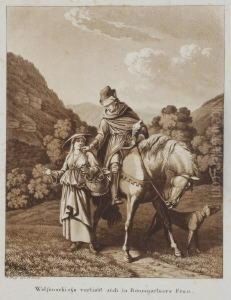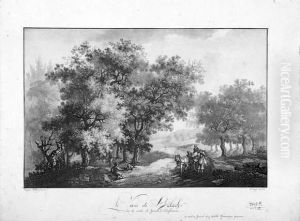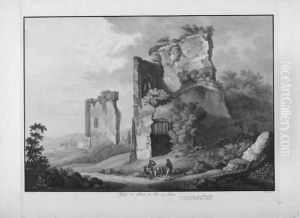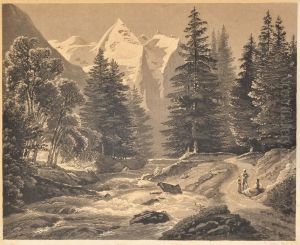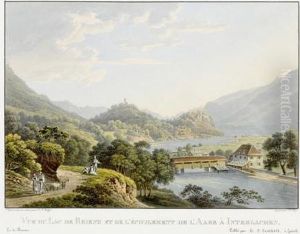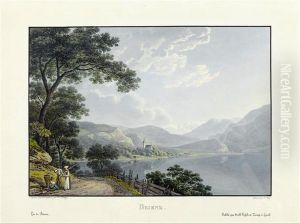Franz Hegi Paintings
Franz Hegi was a Swiss artist and engraver born in Zürich on January 16, 1774. He is primarily known for his detailed engravings and landscapes, capturing the essence of Swiss scenery during the late 18th and early 19th centuries. His work was significant during a period when the visual arts were transitioning from the Rococo style to Neoclassicism, and ultimately into Romanticism.
Hegi's talent for engraving emerged early, and he started his career as an apprentice under the tutelage of Johann Heinrich Lips, a renowned engraver of the time. Hegi's skills quickly developed, and he became adept at capturing the fine details of landscapes and architecture, which would become a hallmark of his work. In an era before photography, such engravings were crucial for documenting the appearance of locales and historical sites.
Throughout his life, Hegi traveled extensively across Switzerland, which greatly influenced his artistic output. His engravings often featured the picturesque and varied Swiss landscapes, from the majestic Alps to the serene lakes and the quaint, idyllic villages. These works not only served as souvenirs for travelers but also helped to cultivate a sense of national identity and pride in the Swiss landscape.
Aside from landscapes, Hegi also engraved portraits and historical scenes. His portraits are noted for their detail and the skill with which he captured the personalities and social stature of his subjects. Hegi’s historical engravings are valuable records of events and personages from Switzerland’s past, contributing to the country’s historiography.
Franz Hegi’s engravings were widely disseminated, appearing in books and as standalone pieces. His work was influential in promoting the medium of engraving in Switzerland and beyond. He passed away on June 5, 1850, in his hometown of Zürich. Today, his engravings are an important part of Swiss cultural heritage and continue to be studied for their artistic merit and historical significance.

